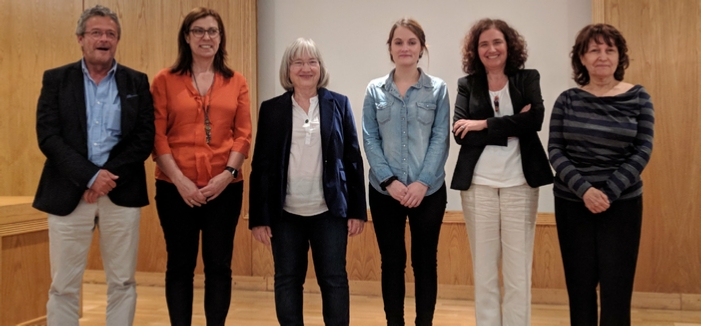The Yeast Genomics* lab @ NOVA
(*evolutionary, functional, comparative and more)




More lab news…


December 2014
New publication:
Gomes F, et al. The diversity and extracellular enzymatic activities of yeasts isolated from water tanks of Vriesea minarum, an endangered bromeliad species in Brazil, and the description of Occultifur brasiliensis f.a., sp. nov. Antonie Van Leeuwenhoek 107:597-
DOI: 10.1007/s10482-

October 2014
Lab members present their work in international conferences
Pedro Almeida
(Poster presentation in the EMBO conference dedicated to Experimental Approaches to Evolution and Ecology using Yeast & other Model Systems, Germany)
Carla Gonçalves
(Oral presentation in the 31st International Specialised Symposium on Yeast -
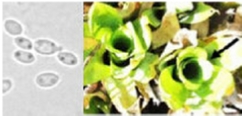


September 2014
New publication:
Francesca N, et al. Yeasts vectored by migratory birds collected in the Mediterranean island of Ustica and description of Phaffomyces usticensis f.a. sp. nov., a new species related to the cactus ecoclade. FEMS Yeast Research 14: 910-
A new yeast species, Phaffomyces usticensis isolated from migratory birds in the Mediterranean island of Ustica was recently described by Nicola Francesca.
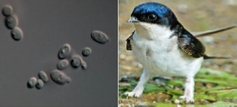


April 2014
New publication:
Peris D, et al. Population structure and reticulate evolution of Saccharomyces eubayanus and its lager-
An international collaborative research into Saccharomyces eubayanus diversity appears on the April cover of Molecular Ecology.

October 2014
Lab members present their work at the 12th European Conference on Fungal Genetics, Seville, March 23-
Marco A. Coelho
(Genetic and genomic insights into the sexual reproductive systems in red yeasts)
Márcia David-
(Molecular determinants of the homothallic sexual behavior of the basidiomycete yeast Phaffia Rhodozyma)
June 2014
New publication:
Almeida P, Gonçalves C, et al. A Gondwanan imprint on global diversity and domestication of wine and cider yeast Saccharomyces uvarum. Nat Commun. 5:4044.
The yeast Saccharomyces uvarum is commonly used in cider and wine fermentation but its natural history has been poorly studied. In a recent work published in Nature Communications, we revealed that the Northern Hemisphere population of S. uvarum has likely derived from a highly diverse South American population. Interestingly, most of the Holarctic strains associated with human-
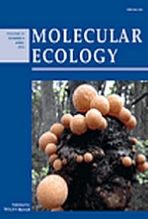

August 2014
Lab members present talks at the International Mycological Congress (IMC10) in Bangkok, Thailand
José P. Sampaio
(Population genomics reveals new domestication patterns in Saccharomyces yeasts)
Paula Gonçalves
(Horizontal gene transfer of sugar transporters in the Ascomycota)

July 2014
Lab members present talks at the XX Jornadas de Leveduras Prof. Nicolau van Uden at IST, Lisboa
Raquel Barbosa
(Population genomics of Saccharomyces cerevisiae in Brazil)
Carla Gonçalves
(Global diversity and domestication in the wine and cider yeast Saccharomyces uvarum)




January 2014
New publication:
David-
A phylogeographic study of the astaxanthin-


December 2013
New publication:
Leducq J-
An international collaborative study investigated the role of climate changes on adaptation of North American populations of the wild yeast Saccharomyces paradoxus. Results suggest that global climatic changes may lead to adaptation to new conditions within groups, or changes in their geographical distributions.



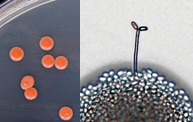
Lab members attended the Portuguese congress of Microbiology and Biotechnology, Microbiotec'13, in Aveiro.
Marco A. Coelho
was awarded the Best Poster Presentation Prize (Genomics and System Biology) attributed by SPM.

New lab members
Oliver Röhl and Renata Santos join the lab.
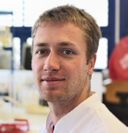
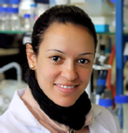


Lab members present their work at the EMBO Conference: Comparative Genomics of Eukaryotic Microorganisms, in Sant Feliu de Guixols, Spain.
Marco A. Coelho
(Evolution and comparative genomics of the pseudo-
Márcia David-
(Understanding the molecular determinants of unisexual behavior in the yeast Phaffia rhodozyma)
Carla Gonçalves
(Multiple horizontal gene transfer events involving a fungal transporter gene)
Márcia David-





August 2013
Pedro Almeida presents a talk at the XIV Congress of the European Society for Evolutionary Biology.
Pedro Almeida
(Tracing the origins of domestication in the wine yeast Saccharomyces cerevisiae)





June 2013
Lab members present talks in international conferences
José P. Sampaio
(Invited presentation in the 5th Conference on Physiology of Yeast and Filamentous fungi, Montpellier, France,
entitled "Surveying wild lineages of Saccharomyces to understand patterns of domestication")
Carla Gonçalves
(Oral presentation in the 30th International Specialised Symposium on Yeast -

May 2013
New publication:
Coelho MA, et al. Extensive Intra-
DOI: 10.1371/journal.pgen.1003587.
In this work we describe our findings concerning a single fungal gene that seems to have been transferred between fungi very often. We believe this may be related to the fact that the gene can be both very useful and detrimental for the host, depending on genetic background and environment. Our results suggest that exchange of genes between fungi may happen much more frequently than assumed so far.
March 2013
New publication:
Coelho MA, et al. Living and Thriving on the Skin: Malassezia Genomes Tell the Story. mBio 4:e00117-
Marco A. Coelho is the leading author of a commentary in mBio entitled "Living and Thriving on the Skin: Malassezia Genomes Tell the Story".

October 2013
New publication:
Francesca N, et al. Wickerhamomyces sylviae f.a., sp. nov., an ascomycetous yeast species isolated from migratory birds in Sicily, Italy. Int J Syst Evol Microbiol. 63:4824-
A new yeast species, Wickerhamomyces sylviae isolated from migratory birds in Sicily was recently described by Nicola Francesca.


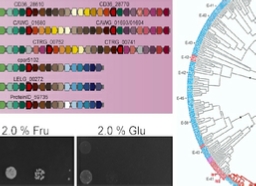



May 2015
New publication:
Coelho M.A., et al. Draft genome sequence of Sporidiobolus salmonicolor CBS 6832, a red-

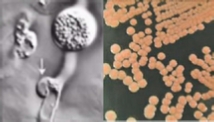
We have sequenced and annotated the genome of the red yeast Sporidiobolus salmonicolor strain CBS 6832. This species is recognized mainly as a phyllosphere yeast and is free-
José P. Sampaio is an invited speaker at the 42nd Annual Conference on Yeasts, Smolenice, Slovakia.
José P. Sampaio
(Invited lecuture to the memory of Dr. A. Kochová-


April 2015
New publication and Editor’s Choice:
de Garcia, et al. Sex in the cold: taxonomic reorganization of psychrotolerant yeasts in the order Leucosporidiales.
Species of Leucosporidiales are a group of psychrotolerant yeasts with biotechnological potential. In this collaborative work, we clarified the evolutionary relationship among the three recognized species of this lineage and proposed a new genus Pseudoleucosporidium gen. nov. and the new combination P. fasciculatum comb. nov. to resolve the polyphyly of Leucosporidium genus.

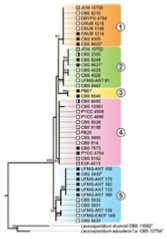


March 2015
Marco A. Coelho presents a talk at the 28th Fungal Genetics conference, Pacific Grove, CA, USA.
Marco A. Coelho
(Evolution of mating systems in basidiomyceteous yeasts)

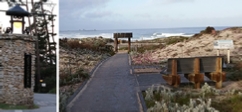

July 2015
New publication:
Maia TM, et al. Evolution of Mating Systems in Basidiomycetes and the Genetic Architecture Underlying Mating-
DOI: 10.1534/genetics.115.177717
The tetrapolar system, in which mating is dictated by two alternate sets of MAT genes at genetically unlinked regions, has been proposed to be the ancestral state in basidiomycete fungi. Support for this model has however been gathered only from two more recently derived lineages. In this paper, we used whole-
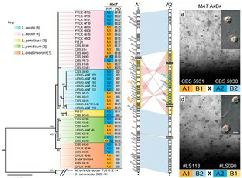

August 2015
New publication:
Almeida P, et al. A population genomics insight into the Mediterranean origins of wine yeast domestication.
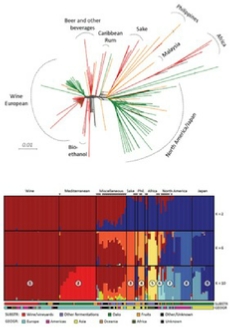
In this paper, we analyze whole-


October 2015
New publication:
Gonçalves C, et al. Stepwise functional evolution in a fungal sugar transporter family.
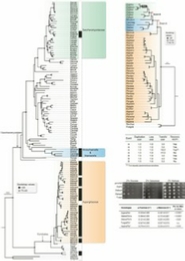
In this paper, we examined the evolutionary history of a unique family of fungal sugar facilitators (Ffz-


September 2015
New publication:
Freitas LF, Barbosa R, Sampaio JP, etal. Starmera pilosocereana sp. nov., a yeast isolated from necrotic tissue of cacti in a sandy coastal dune ecosystem.
José P. Sampaio
(Plenary lecture entitled "A population genomics view of Saccharomyces natural history and domesticaltion")



November 2015
A commentary on our paper concerning the origins of wine yeast domestication. appears in the News and Views section of Molecular Ecology:
Also check press coverage about this research published in the daily journal Público (in Portuguese)

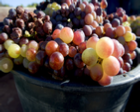
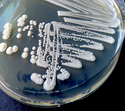

New publication:
Yurkov AM, et al. Local climatic conditions constrain soil yeast diversity patterns in Mediterranean forests, woodlands and scrub biome
New publication:
Francesca N, et al. Jaminaea phylloscopi sp. nov. (Microstromatales), a basidiomycetous yeast isolated from migratory birds in the Mediterranean basin.




New publication:
Pontes A, Röhl O, et al. Cystofilobasidium intermedium sp. nov. and Cystofilobasidium alribaticum f.a. sp. nov., isolated from Mediterranean forest soils.
DOI:doi: 10.1099/ijsem.0.000835
In this paper, multiple isolates belonging to the basidiomycetous genus Cystofilobasidium were obtained from forest soils in Serra da Arrábida Natural Park in Portugal. Phylogenetic analyses support the recognition of two novel species: Cystofilobasidium alribaticum f.a., sp. nov., which does not form hyphae even when different strains are crossed; and Cystofilobasidium intermedium which is self-
January 2016
New publication:
Barbosa, et al. Evidence of Natural Hybridization in Brazilian Wild Lineages of Saccharomyces cerevisiae.
In this paper, we report a candidate natural habitat of S. cerevisiae in South America (Brazil). Using whole-
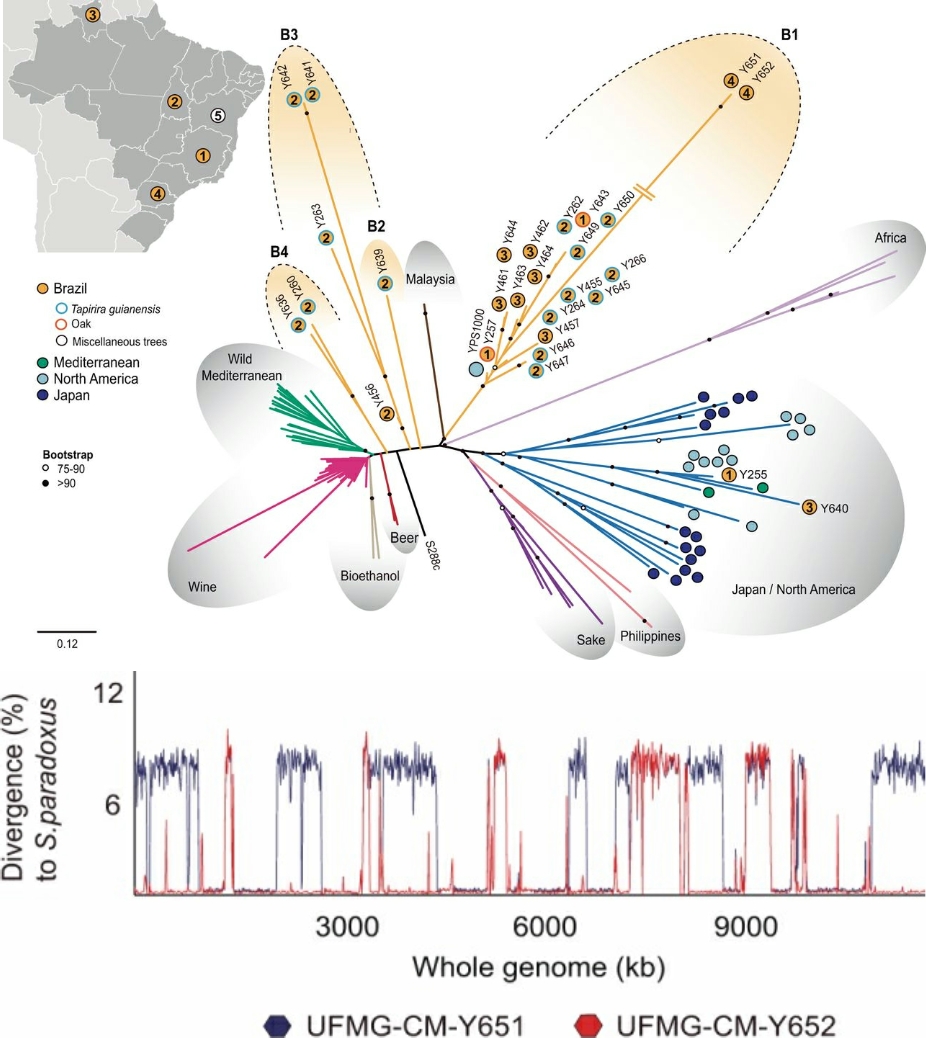
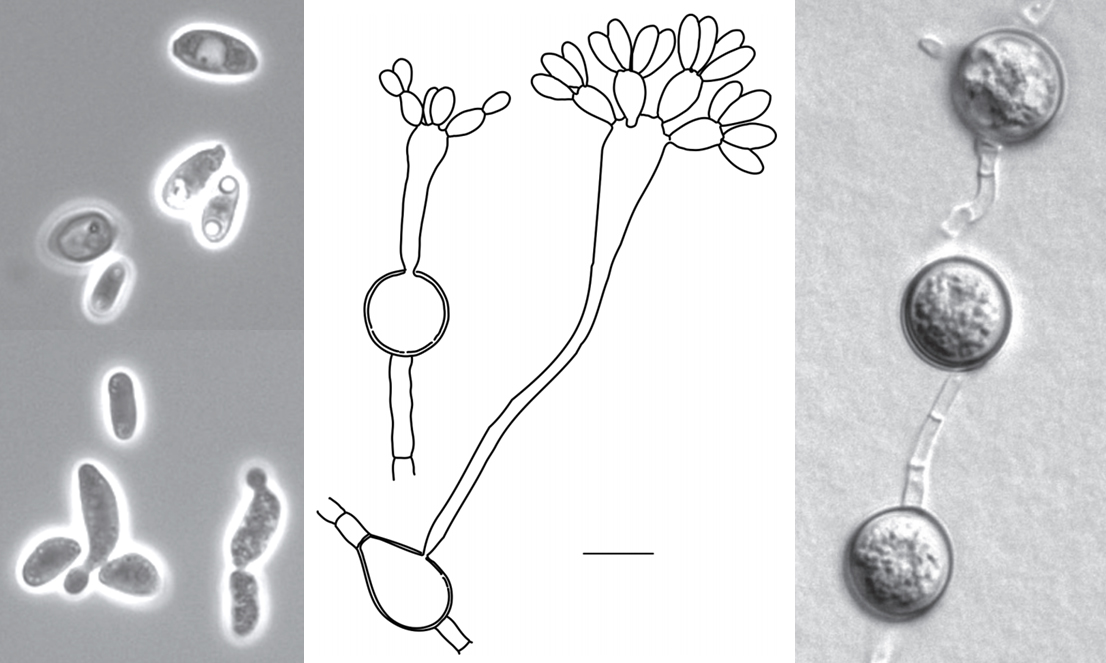
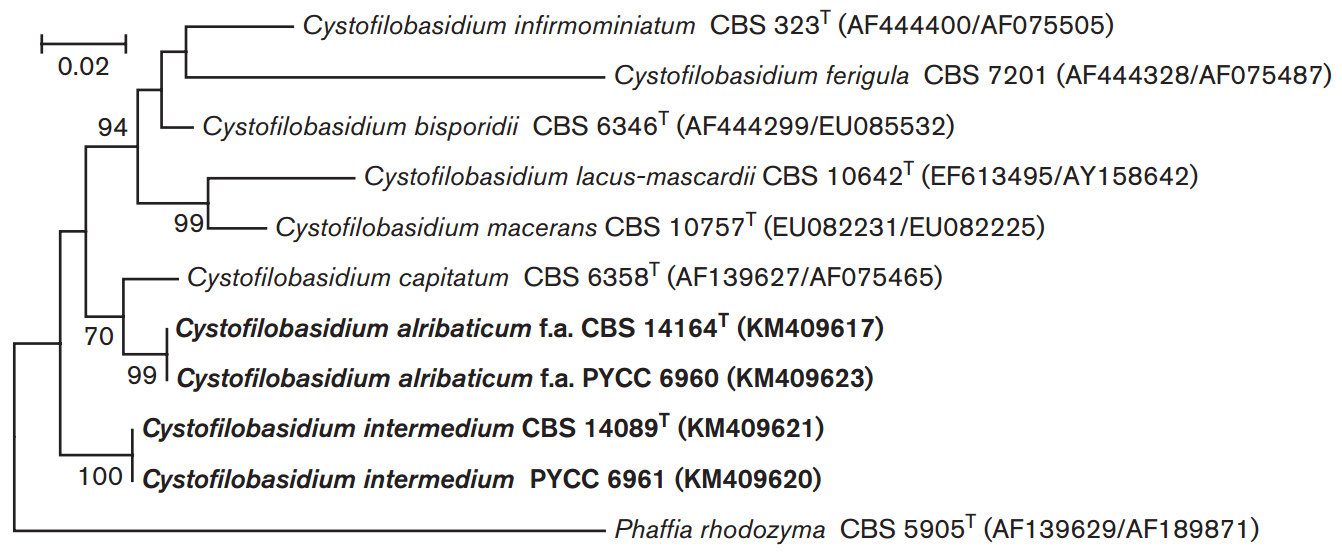

June 2016
New publication:
Burgaud G, et al. Yamadazyma barbieri f.a. sp. nov., a novel ascomycetous anamorphic yeast isolated from a Mid-

June 2016
New publication:
David-
DOI:10.1371/journal.pgen.1006110
Some fungi are capable of sexual reproduction without the need for a sexually compatible partner, a behavior called homothallism. In this paper, we examined in detail the homothallic sexual cycle of the yeast Phaffia rhodozyma that belongs to the Basidiomycota, a lineage that is best known for containing mushroom-
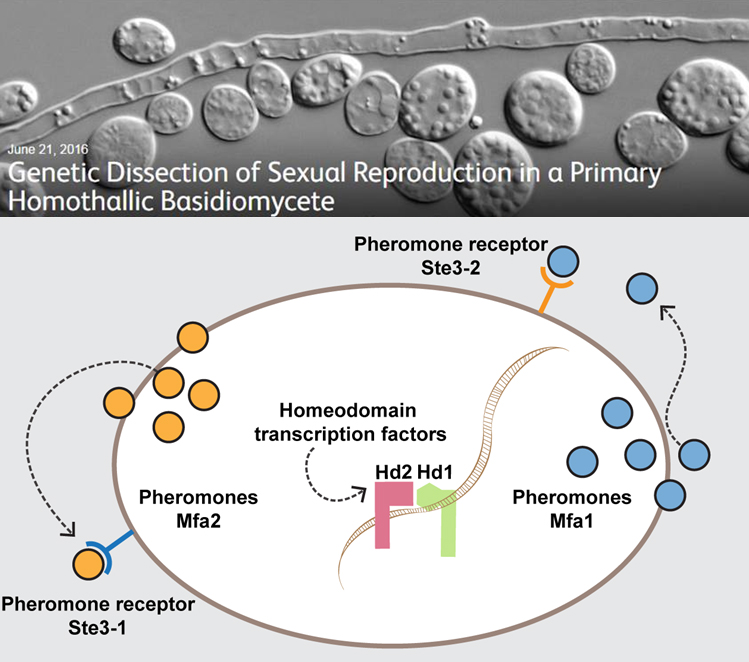


October 2016
New publication:
Gonçalves M, et al. Distinct domestication trajectories in top-
DOI: 10.1016/j.cub.2016.08.040
How different are S. cerevisiae strains used to produce top-
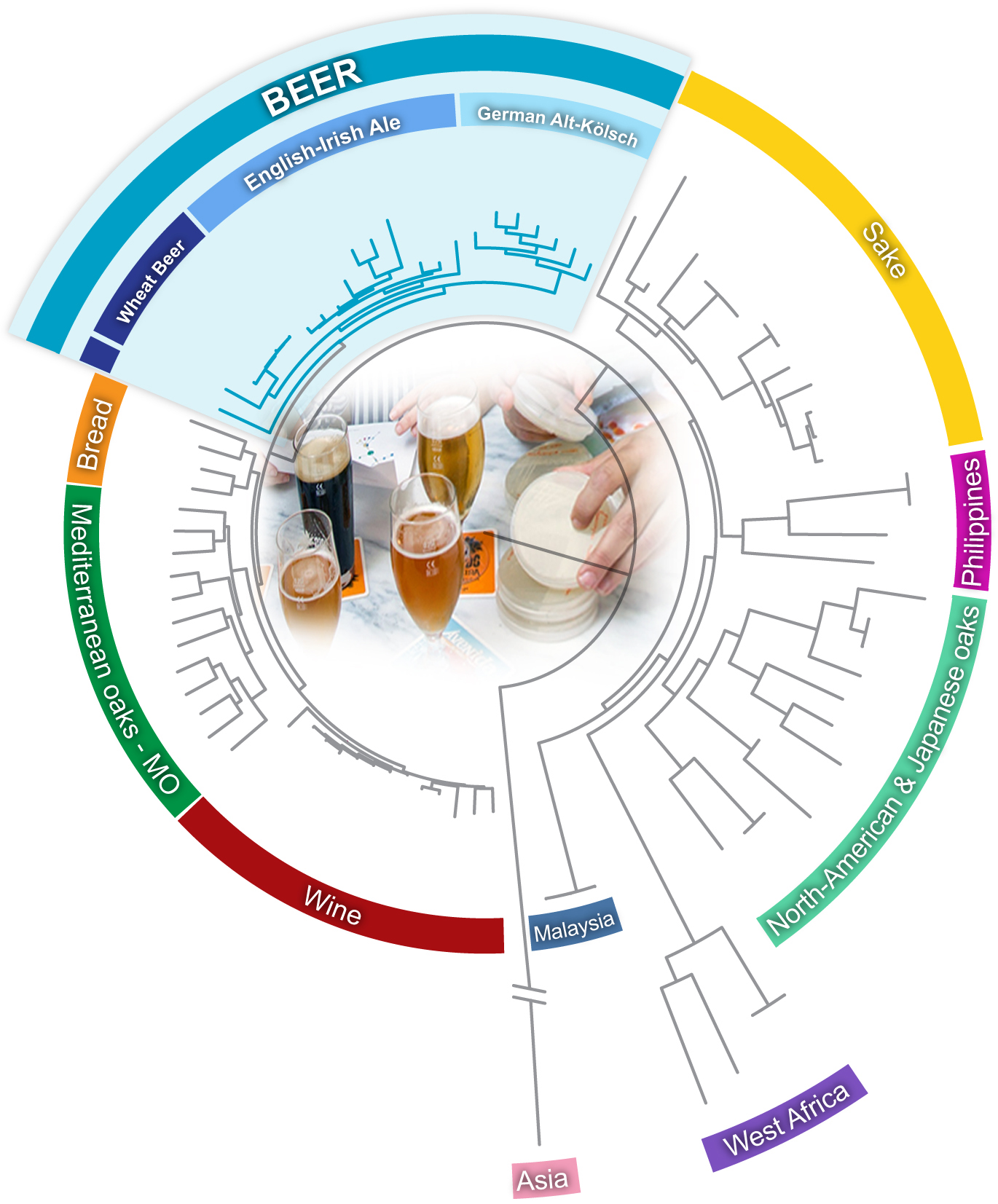


December 2016
Well defended!
Congratulations to Pedro Almeida who defended his Ph.D. Thesis “Microbe Domestication and the Identification of the Wild Genetic Stock of Wine Yeasts” (see photos in the Gallery)




New publication:
Sampaio JP, etal. Taxonomy, diversity, and typing of brewing yeasts. In Brewing Microbiology: Current Research, Omics and Microbial Ecology (Edited by: Charles W. Bamforth and Nicholas A. Bokulich). Caister Academic Press, U.K. pp. 88-
DOI: 10.21775/9781910190616.04
New lab member:
Welcome to Ph.D. student Parichat Into, from Dr. Savitree Limtong lab, who also visited the lab.

February 2017
New publication:
Almeida P, et al. Adaptive divergence in wine yeasts and their wild relatives suggests a prominent role for introgressions and rapid evolution at non coding sites. Molecular Ecology 26:2167-

New publication:
Gibson B, et al. New yeasts -




April 2017
(Lecture entitled "Domesticación de levaduras cerveceras”)


June 2017
New publication:
Branco S, et al. Evolutionary strata on young mating-

New publication:
Coelho MA et al. Fungal Sex: The Basidiomycota. Microbiol Spectr. 5


Well defended!
Congratulations to Márcia Palma who defended hes Ph.D. Thesis “Elucidating the mating system of Phaffia rhodozyma, an astaxanthin-

March 2017
New publication:
Peris D, et al. Hybridization and adaptive evolution of diverse Saccharomyces species for cellulosic biofuel production. Biotechnol Biofuels. 10:78.


November 2016
New publication:
Mašínová T, Pontes A, et al. Libkindia masarykiana gen. nov. et sp. nov., Yurkovia mendeliana gen. nov. et sp. nov., and Leucosporidium krtinense f.a. sp. nov., isolated from temperate forest soils.
New publication:
Bellora N, et al. Comparative genomics provides new insights into the diversity, physiology, and sexuality of the only industrially exploited tremellomycete: Phaffia rhodozyma

February 2018
Accepted:
Gonçalves et al. Evidence for loss and reacquisition of alcoholic fermentation in a fructophilic yeast lineage.

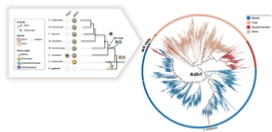


April 2018
New students in the lab:
We are happy to host these enthusiastic students that are doing their undergraduate project in the Yeast Genomics Lab! From left to right: Francisco, José, Joana, Andreia, João, Francisca, Céline and André.
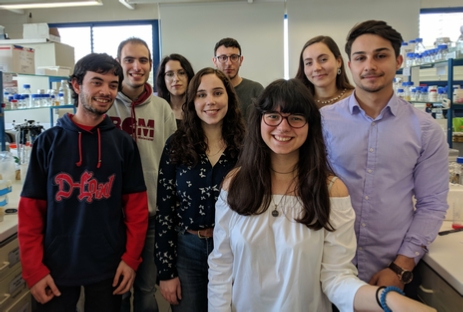


May 2018
PhD concluded -
Carla Gonçalves got her PhD after a brilliant defense of her thesis entitled “Unravelling the molecular basis of the evolution of fructophily in yeasts: a comparative genomics approach”
